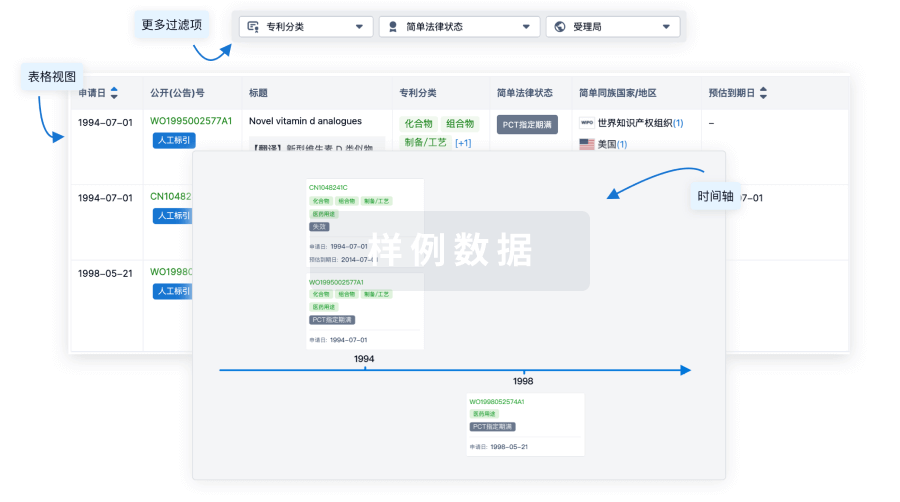更新于:2024-12-21
SCH-54292
更新于:2024-12-21
概要
基本信息
在研机构- |
最高研发阶段终止临床前 |
首次获批日期- |
最高研发阶段(中国)- |
特殊审评- |
关联
100 项与 SCH-54292 相关的临床结果
登录后查看更多信息
100 项与 SCH-54292 相关的转化医学
登录后查看更多信息
100 项与 SCH-54292 相关的专利(医药)
登录后查看更多信息
3
项与 SCH-54292 相关的文献(医药)1998-11-01·Biochemistry3区 · 生物学
Interaction of a Novel GDP Exchange Inhibitor with the Ras Protein
3区 · 生物学
Article
作者: Hendrickson, Thomas F. ; Love, Robert A. ; Taveras, Arthur G. ; Remiszewski, Stacy ; Vibulbhan, Bancha ; Pramanik, Birendra N. ; Webber, Steve E. ; Sisson, Wess A. ; Girijavallabhan, Viyyoor M. ; Brown, Edward L. ; Tsarbopoulos, Anthony ; Aust, Robert M. ; Wang, Yu-Sen ; DeLisle, Dorothy M. ; Kissinger, Charles R. ; Kirschmeier, Paul ; Snow, Mark E. ; Brown, Joan E. ; Ganguly, Ashit K. ; Cesarz, David ; Heimark, Larry ; Doll, Ronald J. ; Fuhrman, Shella A. ; Huang, Eric C. ; del Rosario, J. ; Villafranca, J. Ernest
Mutated, tumorigenic Ras is present in a variety of human tumors. Compounds that inhibit tumorigenic Ras function may be useful in the treatment of Ras-related tumors. The interaction of a novel GDP exchange inhibitor (SCH-54292) with the Ras-GDP protein was studied by NMR spectroscopy. The binding of the inhibitor to the Ras protein was enhanced at low Mg2+ concentrations, which enabled the preparation of a stable complex for NMR study. To understand the enhanced inhibitor binding and the increased GDP dissociation rates of the Ras protein, the conformational changes of the Ras protein at low Mg2+ concentrations was investigated using two-dimensional 1H-15N HSQC experiments. The Ras protein existed in two conformations in slow exchange on the NMR time scale under such conditions. The conformational changes mainly occurred in the GDP binding pocket, in the switch I and the switch II regions, and were reversible. The Ras protein resumed its regular conformation after an excess amount of Mg2+ was added. A model of the inhibitor in complex with the Ras-GDP protein was derived from intra- and intermolecular NOE distance constraints, and revealed that the inhibitor bound to the critical switch II region of the Ras protein.
1998-10-01·Journal of mass spectrometry : JMS4区 · 化学
Electrospray ionization mass spectrometry for the study of non-covalent complexes: an emerging technology
4区 · 化学
Article
作者: Urooj A. Mirza ; Yan-Hui Liu ; Peter L. Bartner ; Birendra N. Pramanik ; Ashit K. Ganguly
The detection of non-covalent complexes in the mass range 19,000-34,000 Da, using electrospray ionization mass spectrometry (ESI-MS), is reviewed. The examples discussed include (1) a protein-ligand interaction (ras-GDP), (2) an inhibitor-protein-ligand interaction (SCH 54292/SCH 54341-ras-GDP), (3) a protein-protein interaction (gamma-IFN homodimer) and (4) a protein-metal complex [HCV (1-181)-Zn]. In each case, the ESI-MS method is capable of releasing the intact non-covalent complex from its native solution state into the gas phase in the form of multiply-charge ions. The molecular masses of these complexes were determined with a mass accuracy of better than 0.01%, which is far superior to the traditional methods of sodium dodecyl sulfate polyacrylamide gel electrophoresis and gel permeation chromatography. The method provides the researcher with a quick, reliable and reproducible method for probing difficult biological problems. The key to success in the study of non-covalent complexes depends on careful understanding and manipulation of ESI source parameters and sample solution conditions; special care must be taken with the source orifice potential and the solution pH and organic co-solvents must be avoided. This paper also illustrates the usefulness of ESI-MS for addressing biological problems leading to the discovery of new therapeutics; the approach involves the rapid screening of potential drug candidates, such as weakly bound inhibitors.
1997-05-01·Bioorganic & medicinal chemistry3区 · 医学
Detection and structural characterization of ras oncoprotein-inhibitors complexes by electrospray mass spectrometry
3区 · 医学
Article
作者: A.G. Taveras ; J.E. Brown ; Y.H. Liu ; P. Kirschmeier ; S. Liberles ; B. Vibulbhan ; M.E. Snow ; A.K. Ganguly ; E.C. Huang ; L. James ; B.N. Pramanik ; L. Heimark ; Y.S. Wang ; J. del Rosario ; R.J. Doll ; V. Girijavallabhan ; S. Remiszewski ; D. Cesarz ; A. Tsarbopoulos
MS based methodology employing electrospray ionization (ESI) is described for the detection of ternary complexes in which SCH 54292 or SCH 54341 and GDP are noncovalently bound to oncogenic ras protein. The observed molecular weights of 19,816 and 19,570 Da confirmed the presence of noncovalent complexes of ras-GDP-SCH 54292 and ras-GDP-SCH 54341, respectively. We have also performed selective chemical modification of lysine residues of the ras protein complex followed by enzymatic digestion and on-line LC-ESI MS peptide mapping to determine protein-drug binding topography. There was a good correlation between nucleotide exchange inhibition as determined by the enzyme assay and evidence of complex formation as determined by MS.
100 项与 SCH-54292 相关的药物交易
登录后查看更多信息
研发状态
10 条进展最快的记录, 后查看更多信息
登录
| 适应症 | 最高研发状态 | 国家/地区 | 公司 | 日期 |
|---|---|---|---|---|
| 肿瘤 | 临床前 | 美国 | - | |
| 肿瘤 | 临床前 | 美国 | - |
登录后查看更多信息
临床结果
临床结果
适应症
分期
评价
查看全部结果
| 研究 | 分期 | 人群特征 | 评价人数 | 分组 | 结果 | 评价 | 发布日期 |
|---|
No Data | |||||||
登录后查看更多信息
转化医学
使用我们的转化医学数据加速您的研究。
登录
或

药物交易
使用我们的药物交易数据加速您的研究。
登录
或

核心专利
使用我们的核心专利数据促进您的研究。
登录
或

临床分析
紧跟全球注册中心的最新临床试验。
登录
或

批准
利用最新的监管批准信息加速您的研究。
登录
或

特殊审评
只需点击几下即可了解关键药物信息。
登录
或

标准版
¥16800
元/账号/年
新药情报库 | 省钱又好用!
立即使用
来和芽仔聊天吧
立即开始免费试用!
智慧芽新药情报库是智慧芽专为生命科学人士构建的基于AI的创新药情报平台,助您全方位提升您的研发与决策效率。
立即开始数据试用!
智慧芽新药库数据也通过智慧芽数据服务平台,以API或者数据包形式对外开放,助您更加充分利用智慧芽新药情报信息。
生物序列数据库
生物药研发创新
免费使用
化学结构数据库
小分子化药研发创新
免费使用

